V.P. means Vest Pocket...
and they ain't kiddin'.
Most of the time, we don't want to talk about our weaknesses.
Well... I'm a fool for cute folders, and I don't care who knows it.
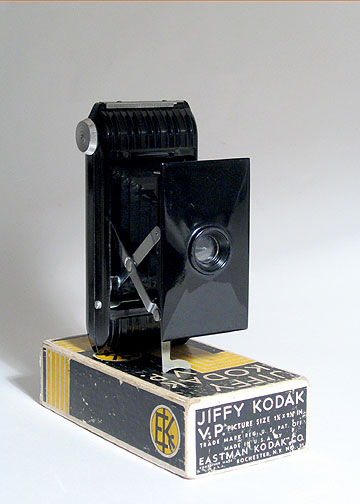
It looks like any number of pop-out cameras from various
makers in and around the '30s -'40s. I say "pop-out" because it's
a bit different than many folders, where you have to fold down the
front plate to extend the bellows. This camera has a small button
(you can see it in the above picture) that you push, and the front
of the camera jumps out with surprising speed. It's fun just to open it!
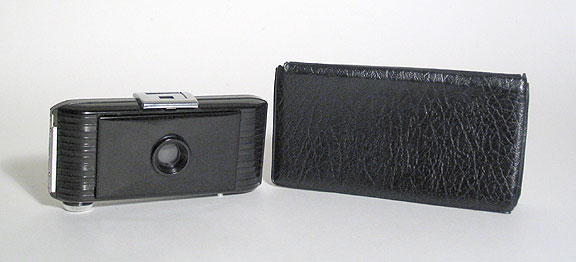
And it's small. Vest Pocket is not just a catchy name. Here it's shown next to
my over used check book. I don't wear a vest, but it (the camera) will easily fit
into a shirt pocket. The check book is the normal sized kind that guys keep
in their hip pocket, when they are allowed to carry one at all.
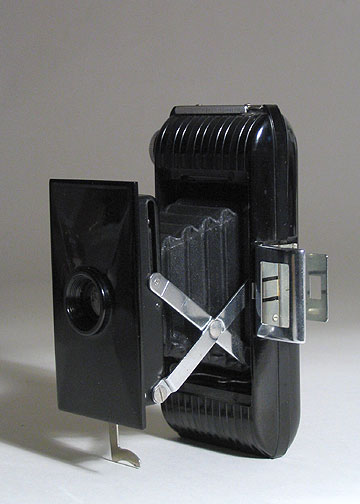
The viewfinder flips open like that of many other folding cameras.
At the top of the camera you can see the latch to open the back.
The little sheet metal foot at the bottom folds up to close the camera.
It's truly meant to be a snapshot camera, as there is no tripod socket,
nor is there a place to attach a cable release.
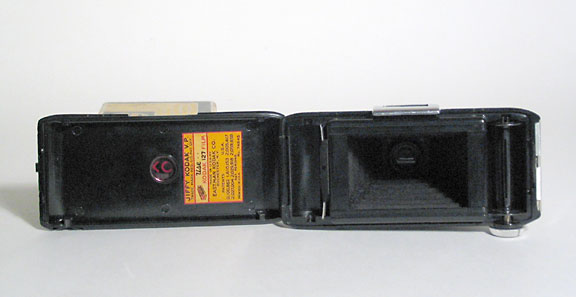
When you open the back latch to load film, hang onto the back. It's not
hinged, and is free to fall on the floor if you're not careful. The entire body
is made of Bakelite. The lens standard is metal, though.
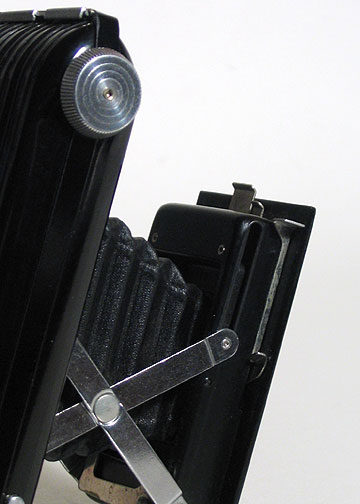
The shutter release is at the bottom of the lens plate. Here you
can see it as the metal lever-looking-thing at the right of the
picture. The two tabs sticking up near it are the only adjustments
offered on this camera. The small one is the bulb setting, (pull out for bulb,
push in for instant shutter, which is about 1/30 sec). The larger tab is the
aperture adjustment. I'm guessing the apertures at about f11 and f16.
I loaded up with Efke 100 film in the required 127 size and went out
and about for a little shooting. You get eight shots on a roll with this
camera. When I came to the end of the roll, I developed the film in
PC-TEA (8 minutes) and printed some near full frame 5x7's on Agfa RC.
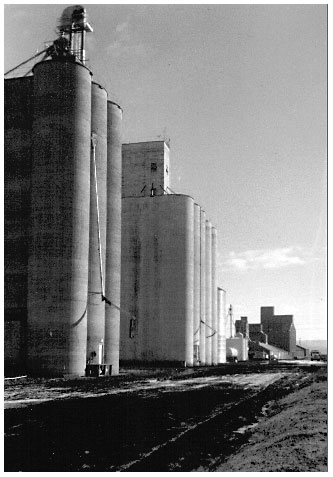
There are a couple of large co-op's near the edge of town,
with storage and cleaning facilities for grain and fertilizers.
These are granaries, made of concrete, unlike the large corrugated
steel type seen elsewhere on the prairie. Some have seed, to be planted,
and some have wheat to be sold as grain, (for bread and stuff like that).
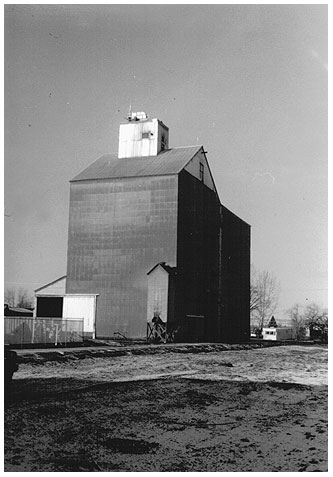
Sometimes it's hard to tell what's inside a building like this, and I don't know
what's in this particular one. Some store grain, but some have seed cleaners
and sorters in them. I've watched it done on canola and rape seed, but have
no idea how those machines sort seed that is smaller than the head of a pin,
as is the case with both canola and rape. The two are related, and most of us are
familiar with canola oil, which comes from seeds. Rape seed is similar, but we don't
use it for cooking. They make fine industrial oil from it.
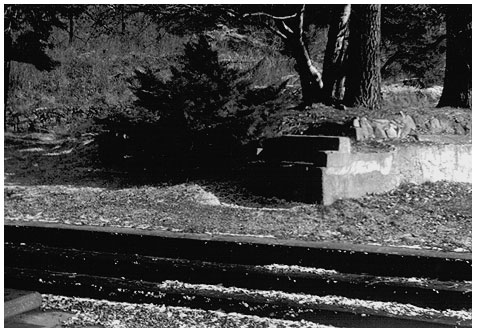
OK, here's the bench, but it's a bit dark. It's made of concrete, and you
wouldn't want to sit on it this time of year.
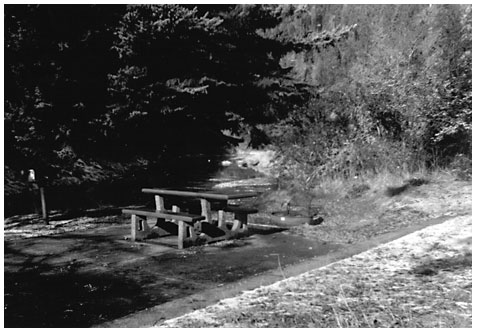
I'll throw in a picnic table too, since I got the bench too dark.
Hope this makes up for it. Actually, I did sit on the bench to take
this photo. It was cold, but sometimes ya gotta suffer for yer art. Ha!
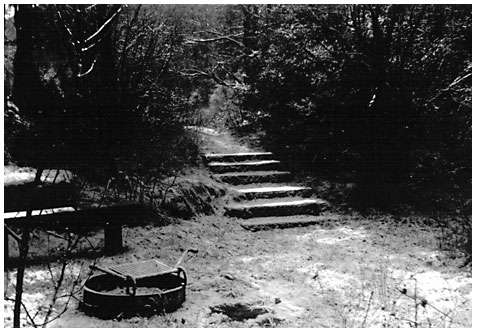
Same picnic ground as the bench and table. I just liked these steps.
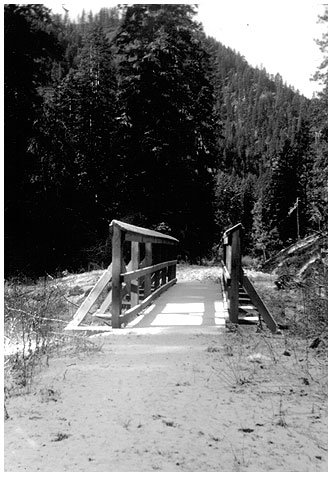
And a little footbridge at another camp ground
just up the river from the other shots. It was a contrasty
day, and these shots show it. The little camera does pretty
well though. If I'd been taking snaps of gramma and gramps
at the Lincoln Memorial, it would have got them ok.
Thanks for lookin'.
deansphotographica.com
deanw@bmi.net
4-05
© 2005 Dean Williams